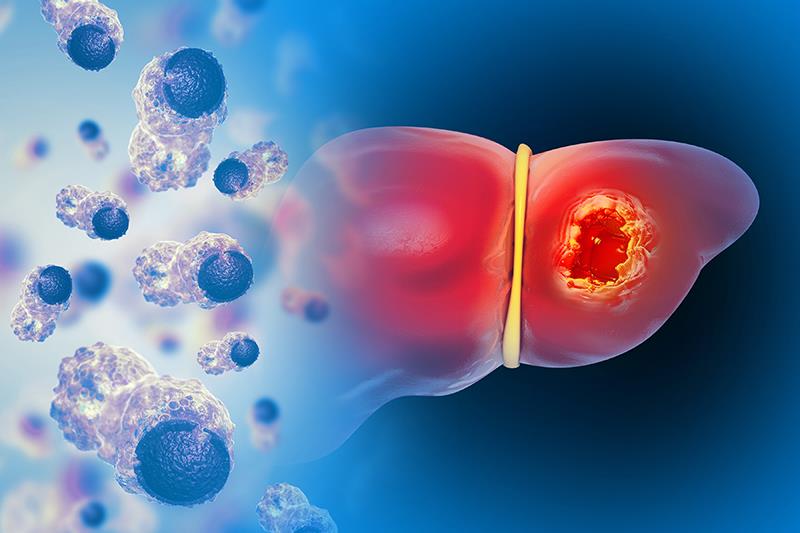First-line NIVO plus IPI delivers ORR, OS benefits in patients with HCC





Among Chinese patients with unresectable/advanced hepatocellular carcinoma (HCC), treatment with nivolumab plus ipilimumab (NIVO + IPI) showed better objective response rate (ORR) and overall survival (OS) compared with lenvatinib or sorafenib (LEN/SOR) in the first-line setting, according to the CheckMate 9DW expanded analysis presented at ESMO GI 2025.
At a median follow-up of 31.3 months, the ORR per BICR* was higher among patients who received NIVO + IPI compared with those who received LEN/SOR (37 percent vs 14 percent). Complete response rates were 7 percent for NIVO + IPI vs 2 percent for LEN/SOR, while partial response rates were 30 percent and 12 percent, respectively.
Moreover, the median duration of response was not reached in the NIVO + IPI arm, while 8.4 months was reported in the LEN/SOR arm.
A deeper tumour response was also observed with NIVO + IPI, which demonstrated a greater median tumour reduction of 47.1 percent compared with 13.8 percent with LEN/SOR.
In addition, a higher proportion of patients treated with NIVO + IPI achieved tumour reductions of >50 percent and >75 percent from baseline in the target lesion (45 percent vs 5 percent and 21 percent vs 1 percent, respectively) than those treated with LEN/SOR.
The median OS was 23.5 months in patients treated with NIVO + IPI compared with 20.1 months in those treated with LEN/SOR (hazard ratio [HR], 0.82), with a higher OS rate at 24 months (48 percent vs 39 percent).
These findings indicated that the ORR and OS benefits of NIVO + IPI were consistent across subgroups within the Chinese population, the researchers noted.
“The results further support NIVO + IPI as a potential new first-line standard-of-care therapy for patients with unresectable HCC in China, a region with the highest HCC incidence and overall mortality rate from HCC globally,” according to the researchers.
This expanded analysis of the CheckMate 9DW study involved 208 Chinese patients with unresectable/advanced HCC who were randomized to receive NIVO 1 mg/kg + IPI 3 mg/kg intravenously once every 3 weeks (Q3W) for up to four cycles, then NIVO 480 mg Q4W (NIVO + IPI arm: n=98, median age 63.5 years) or LEN 8 or 12 mg orally once daily or SOR 400 mg orally twice daily (LEN/SOR arm: n=102, median age 62 years).
Patients continued treatment until disease progression, unacceptable toxicity, withdrawal of consent (both arms), or a maximum treatment duration of 2 years (NIVO + IPI arm only). [ESMO GI 2025, abstract 157P]
Additional endpoints
Patients treated with NIVO + IPI achieved a numerically longer median PFS2** compared with LEN/SOR (22 vs 15.5 months; HR, 0.76), translating to a 24-percent reduction in the risk of death or disease progression on subsequent systemic therapy.
Additionally, fewer patients on the combination regimen vs those on LEN/SOR received subsequent anticancer treatment (41 percent vs 52 percent), including anti-PD-1/PD-L1 therapies (5 percent vs 15 percent) and anti-VEGF*** agents (30 percent and 16 percent).
Safety endpoints
Treatment-related adverse events (AEs) of any grade occurred in 90 percent of patients treated with NIVO + IPI and 95 percent of those treated with LEN/SOR.
In the NIVO + IPI arm, 61 percent of patients experienced any-grade immune-mediated AEs (IMAEs), with hepatitis and rash being the most common grade 3/4 IMAEs. However, the researchers noted that the majority of IMAEs were manageable and did not lead to treatment delay, interruption, or discontinuation.
“Overall, the safety profile of NIVO + IPI in the Chinese population was manageable and consistent with the global results, with no new safety concerns identified,” they added.